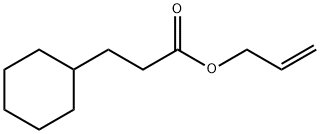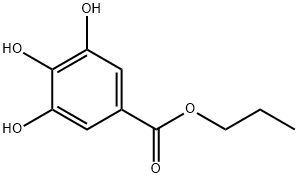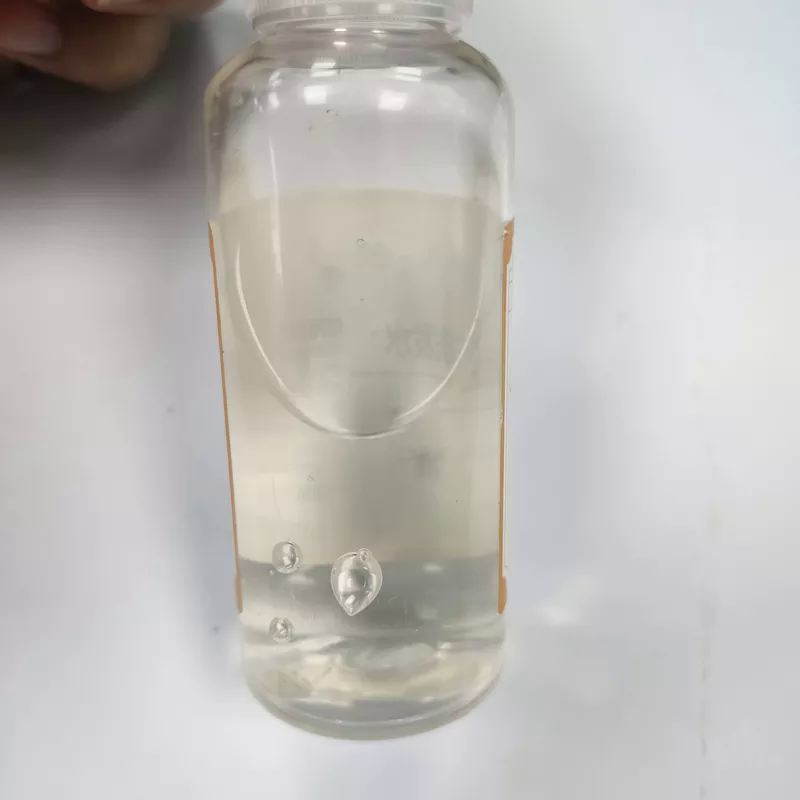Propyl propionate
- CAS NO.:106-36-5
- Empirical Formula: C6H12O2
- Molecular Weight: 116.16
- MDL number: MFCD00009373
- EINECS: 203-389-7
- SAFETY DATA SHEET (SDS)
- Update Date: 2024-12-18 14:08:57

What is Propyl propionate ?
Chemical properties
Clear colorless liquid
Chemical properties
Propyl propionate has a complex, fruity odor reminiscent of apple, banana and pineapple. It has a somewhat pleasant, bitter flavor.
Occurrence
Reported found among the volatile constituents of grape var. white sauvignon. Also reported found in fresh apple, apple juice, apricot, melon, papaya, pear, Gruyere de Comte cheese, rum, cider, popcorn, durian, olive, malt whiskey and coffee.
The Uses of Propyl propionate
Propyl propionate is a general reagent which can be used in various transesterification reactions. It is used as Solvent for nitrocellulose, paints, varnishes, lacquers, coating agents.
Preparation
Propyl propionate was synthesized by esterification of propyl alcohol with the corresponding acid in the presence of concentrated H2SO4, or in the presence of BF3.
Definition
ChEBI: Propyl propionate is a propanoate ester resulting from the formal condensation of the hydroxy group of propanol with the carboxy group of propanoic acid. It has a role as a human metabolite, a rat metabolite, a biomarker and a fungal metabolite. It is functionally related to a propan-1-ol.
What are the applications of Application
n-propyl propionate is a fast evaporating solvent. Its linear structure contributes to effective viscosity reduction and improves solvent diffusion from coating films. It has application in automotive refinish, OEM coatings, appliance coatings, printing inks and as polymerization solvent.Its good activity yields efficient resin viscosity reduction that enables the development of lower VOC coatings. Its high electrical resistivity is beneficial in optimizing transfer efficiency in coatings applied via electrostatic spray equipment.
Aroma threshold values
Detection: 57 ppb
Taste threshold values
Taste characteristics at 20 ppm: sweet, lift, tropical green, fruity notes.
General Description
Propyl propionate and water mixtures can be separated by pervaporation using PEBA membranes. The diffusivity of pure propyl propionate in the PEBA membrane is about 28 times higher than pure water diffusivity.
Flammability and Explosibility
Flammable
Purification Methods
Treat the ester with anhydrous CuSO4, then distil it under nitrogen. [Beilstein 2 IV 707.]
Properties of Propyl propionate
| Melting point: | −76 °C(lit.) |
| Boiling point: | 122-124 °C(lit.) |
| Density | 0.881 g/mL at 25 °C(lit.) |
| vapor density | 4 (vs air) |
| vapor pressure | 18.53hPa at 25℃ |
| refractive index | n |
| FEMA | 2958 | PROPYL PROPIONATE |
| Flash point: | 76 °F |
| storage temp. | Flammables area |
| solubility | 5g/l |
| form | Liquid |
| color | Clear colorless |
| Specific Gravity | 0.882 (20/4℃) |
| Odor | Winey-fruity, Melon-like odor with a mildly fermented note |
| Odor Threshold | 0.058ppm |
| explosive limit | 1.3%(V) |
| Water Solubility | Soluble in water. (5g/L). |
| Merck | 14,7867 |
| JECFA Number | 142 |
| BRN | 1699993 |
| Dielectric constant | 4.7(20℃) |
| CAS DataBase Reference | 106-36-5(CAS DataBase Reference) |
| NIST Chemistry Reference | Propanoic acid, propyl ester(106-36-5) |
| EPA Substance Registry System | Propanoic acid, propyl ester (106-36-5) |
Safety information for Propyl propionate
| Signal word | Danger |
| Pictogram(s) |
 Flame Flammables GHS02  Exclamation Mark Irritant GHS07 |
| GHS Hazard Statements |
H225:Flammable liquids H332:Acute toxicity,inhalation |
| Precautionary Statement Codes |
P210:Keep away from heat/sparks/open flames/hot surfaces. — No smoking. P233:Keep container tightly closed. P240:Ground/bond container and receiving equipment. P241:Use explosion-proof electrical/ventilating/lighting/…/equipment. P242:Use only non-sparking tools. |
Computed Descriptors for Propyl propionate
Propyl propionate manufacturer
Premier Solvents Pvt. Ltd. (Vijay Ajmera Group)
Trichem Laboratories (Bombay) Pvt Ltd
New Products
4-Fluorophenylacetic acid 4-Methylphenylacetic acid N-Boc-D-alaninol N-BOC-D/L-ALANINOL Tert-butyl bis(2-chloroethyl)carbamate 3-Morpholino-1-(4-nitrophenyl)-5,6-dihydropyridin- 2(1H)-one Furan-2,5-Dicarboxylic Acid Tropic acid S-2-CHLORO PROPIONIC ACID ETHYL ISOCYANOACETATE 2-Bromo-1,3-Bis(Dimethylamino)Trimethinium Hexafluorophosphate (6-METHYL-[1,3]DITHIOLO[4,5-b]QUINOXALIN-2-ONE INDAZOLE-3-CARBOXYLIC ACID 4-IODO BENZOIC ACID (2-Hydroxyphenyl)acetonitrile 4-Bromopyrazole 5,6-Dimethoxyindanone 2-(Cyanocyclohexyl)acetic acid 4-methoxy-3,5-dinitropyridine 2-aminopropyl benzoate hydrochloride 1-(4-(aminomethyl)benzyl)urea hydrochloride diethyl 2-(2-((tertbutoxycarbonyl)amino) ethyl)malonate tert-butyl 4- (ureidomethyl)benzylcarbamate Ethyl-2-chloro((4-methoxyphenyl)hydrazono)acetateRelated products of tetrahydrofuran








You may like
-
 106-36-5 Propyl propionate 99%View Details
106-36-5 Propyl propionate 99%View Details
106-36-5 -
 106-36-5 98%View Details
106-36-5 98%View Details
106-36-5 -
 Propyl Propionate CAS 106-36-5View Details
Propyl Propionate CAS 106-36-5View Details
106-36-5 -
 Propyl propionate CAS 106-36-5View Details
Propyl propionate CAS 106-36-5View Details
106-36-5 -
 1975-50-4 98%View Details
1975-50-4 98%View Details
1975-50-4 -
 2-HYDROXY BENZYL ALCOHOL 98%View Details
2-HYDROXY BENZYL ALCOHOL 98%View Details
90-01-7 -
 14714-50-2 (2-Hydroxyphenyl)acetonitrile 98+View Details
14714-50-2 (2-Hydroxyphenyl)acetonitrile 98+View Details
14714-50-2 -
 118753-70-1 98+View Details
118753-70-1 98+View Details
118753-70-1